Last Updated on 3 months by Francis
Welcome to our informative guide on surge protectors and circuit breaker safety! Whether you’re a homeowner, renter, or simply someone concerned about electrical safety, understanding these essential components is crucial. We’ll explore how surge protectors and circuit breakers work, their importance in preventing electrical hazards, and how they can work together to provide optimal power protection.
Electrical systems can be complex, but we’re here to break it down for you. Let’s dive into the details and empower you with the knowledge to prevent tripping circuit breakers and protect your valuable electronics.
Contents
Key Takeaways:
- Understand the differences between surge protectors and circuit breakers.
- Circuit breakers prevent wires from overheating and starting fires.
- Surge protectors guard against voltage spikes and protect electrical equipment.
- Using both devices together provides comprehensive power protection.
- Choose surge protectors with suitable ratings for optimal performance.
What is a Circuit Breaker?
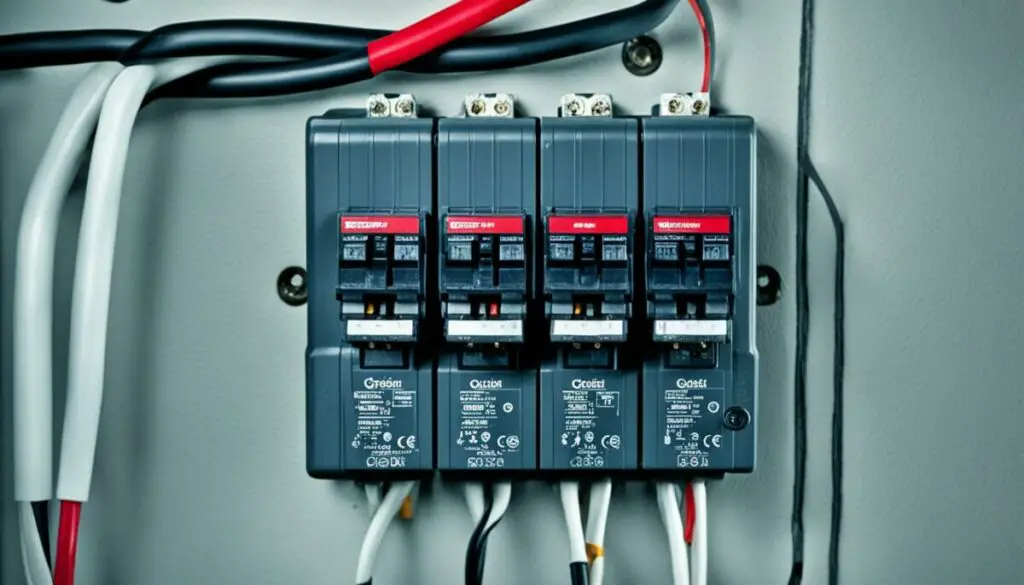
A circuit breaker is an essential electrical switch that serves as a safeguard against potential hazards in electrical systems. Its primary function is to automatically interrupt the flow of electricity when it detects an overload or short circuit in a circuit, preventing wires from overheating and starting a fire. By swiftly cutting off the flow of electricity, the circuit breaker effectively prevents fire hazards and ensures the safety of the overall electrical system and appliances.
Protecting Against Overload and Short Circuit
When an electrical circuit experiences excessive current flow due to an overload or a short circuit, the circuit breaker comes into action. It acts as a gatekeeper, monitoring the current passing through the circuit. If the current exceeds the breaker’s rated capacity, it trips and instantly cuts off the electricity flow, disconnecting the circuit.
This mechanism of detecting and responding to an overload or short circuit plays a crucial role in maintaining electrical safety. By interrupting the flow of electricity, the circuit breaker prevents the excessive current from flowing through the circuit. This action not only protects the wires from potential overheating and fire hazards but also safeguards the electrical appliances connected to the circuit.
The Importance of Circuit Breakers
Circuit breakers are indispensable components of electrical systems, providing vital protection against dangerous situations. Here’s a summary of their key benefits:
- Prevent Fire Hazards: By interrupting the flow of electricity during an overload or short circuit, circuit breakers play a crucial role in preventing electrical fires.
- Protect Electrical System and Appliances: Circuit breakers protect the overall electrical system and the appliances connected to the circuit from the damaging effects of excessive current flow.
- Ensure Safe Electrical Operations: By promptly cutting off the electricity flow, circuit breakers maintain safe electrical operations, minimizing the risk of accidents and injuries.
| Advantages of Circuit Breakers | Disadvantages of Circuit Breakers |
|---|---|
|
|
Overall, circuit breakers are indispensable safety devices, offering reliable protection and peace of mind to homeowners and electrical system users.
How Does a Surge Protector Work?
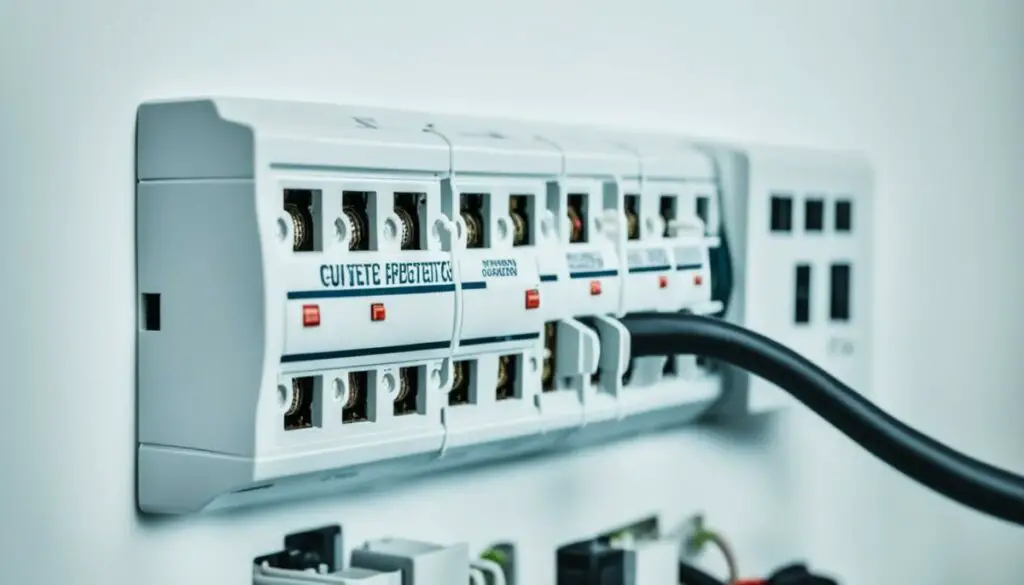
A surge protector is a crucial device that safeguards your electrical equipment from harmful voltage spikes. These voltage spikes can occur due to lightning strikes, power outages, or other events that cause a sudden surge of electricity in your home or office. A surge protector works by diverting the excess voltage to the ground, preventing it from reaching your valuable electrical equipment (such as computers, televisions, and other sensitive devices).
Surge protectors come in various forms, including power strips and whole-house surge protectors. Power strips are commonly used to protect individual devices, while whole-house surge protectors are installed at the electrical panel to defend the entire electrical system.
To give you a better understanding, here’s how a surge protector works:
- When a surge of voltage enters the surge protector, it immediately detects the increase in electrical current.
- The surge protector activates and redirects the extra voltage to the ground, protecting your electrical devices.
- Simultaneously, the surge protector decreases the voltage to a safe level, ensuring that your electrical equipment receives a stable and consistent power supply.
A surge protector acts as a barrier, shielding your electrical equipment from the harmful effects of voltage spikes. It provides peace of mind, knowing that your devices are protected and can maintain their optimal performance even during sudden power fluctuations.
Disclaimer: The image above is for illustrative purposes only and may not represent the exact surge protector model discussed in this article.
The Importance of Surge Protection

Surge protectors play a crucial role in safeguarding your valuable electrical equipment from power surges, effectively extending their lifespan and preventing potential damage. Power surges, which are sudden increases in the electrical voltage, can occur due to various reasons such as lightning strikes, utility company malfunctions, or even the operation of high-powered electrical equipment within a building.
Without the protection provided by surge protectors, power surges can wreak havoc on sensitive electronics, such as computers, televisions, and audio systems. These voltage spikes can cause severe damage, including shortened lifespan, operational failure, or complete destruction of the equipment.
It’s important to understand that power surges can occur at any time, and even small fluctuations in voltage can gradually decrease the lifespan of your electrical equipment.
Surge protectors act as a critical line of defense, intercepting and diverting excess voltage away from your devices. By absorbing and redirecting these voltage spikes to the ground, surge protectors shield your equipment from the potentially destructive effects of power surges.
When selecting a surge protector, consider the following factors:
- Joule rating: The joule rating represents how much energy the surge protector can absorb before it becomes ineffective. Higher joule ratings indicate better protection against power fluctuations.
- Clamping voltage: This refers to the maximum voltage at which the surge protector will react and divert excess voltage. Lower clamping voltages offer better protection.
- Response time: A shorter response time means the surge protector reacts quickly and redirects the excess voltage away from your devices, minimizing the risk of damage.
- Number of outlets: Ensure the surge protector has enough outlets to accommodate all your devices. Overloading a surge protector by plugging in too many devices can decrease its effectiveness.
- Cord length: Consider the reach of the surge protector’s cord and ensure it can easily connect to a grounded AC outlet.
By investing in a reliable surge protector and following these guidelines, you can effectively protect your electrical equipment, prolong their lifespan, and ensure reliable performance even during power surges.
Quote:
“Surge protectors are like the guardians of your electrical equipment, shielding them from potentially damaging power surges. Don’t underestimate the importance of this vital protective barrier.” – John Roberts, Electrical Engineer.
| Damage caused by power surges | Benefit of surge protectors |
|---|---|
| Shortened lifespan of electrical equipment | Extends lifespan by diverting excess voltage |
| Operational failure or malfunction | Ensures reliable performance during power surges |
| Potential for complete destruction of devices | Acts as a critical line of defense |
Surge Protection and Circuit Breakers
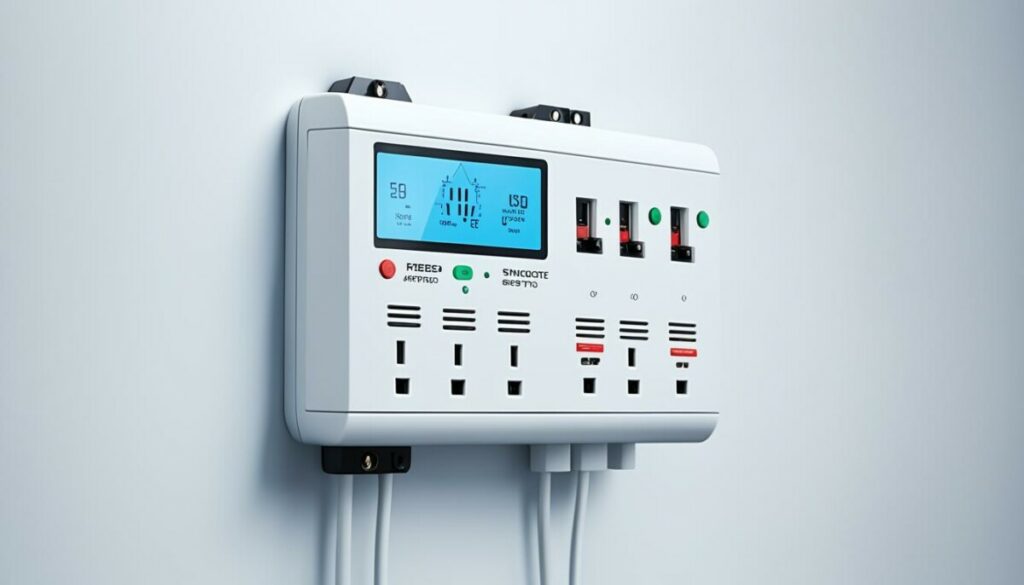
While circuit breakers and surge protectors serve different purposes, they can work together to provide comprehensive electrical protection. Circuit breakers prevent overloading and short circuits, while surge protectors guard against voltage spikes. Using both devices in conjunction can ensure two-fold protection for electrical systems and appliances.
How Circuit Breakers and Surge Protectors Work
Circuit breakers are designed to monitor the flow of electrical current in a circuit and interrupt it if there is an overload or short circuit. They act as a safety net, preventing wires from overheating and starting a fire. Surge protectors, on the other hand, protect electrical equipment from voltage spikes caused by lightning strikes, power outages, or other events. They divert the excess voltage to the ground, keeping the equipment safe.
By combining circuit breakers and surge protectors in your electrical system, you get the best of both worlds. Circuit breakers ensure the overall safety and functionality of your electrical system, while surge protectors provide an additional layer of protection for your sensitive electronics.
Benefits of Two-Fold Protection
The combination of circuit breakers and surge protectors offers several key benefits:
- Enhanced Safety: Circuit breakers prevent fires caused by overloaded circuits, while surge protectors guard against voltage spikes that can damage equipment and pose a safety hazard.
- Extended Lifespan: By protecting your electrical equipment from both overloading and voltage spikes, you can extend their lifespan and reduce the need for costly repairs or replacements.
- Peace of Mind: Knowing that your electrical system is safeguarded by two layers of protection provides peace of mind, allowing you to use your devices worry-free.
By investing in both circuit breakers and surge protectors, you can create a robust defense against electrical hazards and ensure the longevity of your electrical systems and appliances.
Comparison of Circuit Breakers and Surge Protectors
| Feature | Circuit Breakers | Surge Protectors |
|---|---|---|
| Function | Prevent overloading and short circuits | Guard against voltage spikes |
| Protection Level | Protects electrical system | Protects electrical equipment |
| Trigger | Detects excessive current flow | Detects voltage surges |
| Response Time | Instantaneous (within milliseconds) | Instantaneous (within nanoseconds) |
| Installation | Installed at the main electrical panel | Available as power strips or whole-house protectors |
By understanding the distinct functions and benefits of both circuit breakers and surge protectors, you can make informed decisions to ensure the safety and longevity of your electrical systems and valuable electronic devices.
Florida’s Unique Need for Surge Protectors

In Florida, surge protectors are highly recommended due to the state’s high number of lightning strikes. Florida experiences some of the highest exposure to lightning strikes in the United States, making it crucial to protect electrical equipment from potential power spikes and damage.
Lightning strikes can cause significant power surges that pose a considerable risk to valuable electronics. These power spikes can lead to the destruction of sensitive equipment, resulting in costly repairs or replacements. To mitigate these risks, installing surge protectors in Florida homes is essential.
Lightning strikes can cause significant power spikes and pose a significant risk to electrical equipment.
Surge protectors act as a barrier between the electrical system and connected devices, diverting excess voltage to the ground, thereby protecting the equipment from damage. By installing surge protectors, homeowners in Florida can safeguard their valuable electronics and ensure their longevity.
Benefits of Surge Protectors in Florida:
- Protects electrical equipment from power spikes caused by lightning strikes
- Safeguards valuable electronics and prevents costly damage
- Preserves the longevity of sensitive devices
- Provides peace of mind for homeowners
By investing in surge protectors, Floridians can enjoy the benefits of reliable power protection and avoid the potential risks associated with lightning-induced power surges.
Protecting your electrical equipment from power spikes is crucial, especially in Florida, where lightning strikes are frequent. Ensure the safety and longevity of your valuable electronics by installing surge protectors throughout your home.
Whole-Home Surge Protectors
Whole-home surge protectors offer a comprehensive solution for safeguarding the electrical circuits in your house. These devices are installed directly in the electrical panel and provide protection against power spikes that can occur due to various factors, including lightning strikes. By acting as a first line of defense, whole-home surge protectors ensure the safety of your entire electrical system.
Lightning strikes, in particular, pose a significant threat to electrical equipment and can cause severe damage. By installing a whole-home surge protector, you can effectively protect all circuits within your house from the damaging effects of voltage surges caused by lightning strikes and other sources.
Here is an example of how a whole-home surge protector works:
When a lightning strike occurs nearby, the surge protector detects the sudden increase in voltage and diverts excessive electrical energy into the grounding system. This prevents the voltage surge from reaching the electrical circuits and appliances in your home, safeguarding them from potential damage. With a whole-home surge protector in place, you can have peace of mind knowing that your valuable electronics are protected.
Investing in a whole-home surge protector is a smart choice, especially if you live in an area prone to lightning strikes. It provides an added layer of protection to your electrical system, significantly reducing the risk of damage to your appliances and ensuring their longevity.
Here’s a table comparing whole-home surge protectors with other types of surge protection:
| Type of Surge Protector | Installation | Protection | Price Range |
|---|---|---|---|
| Whole-Home Surge Protector | Installed in the electrical panel | Protects all circuits | $200-$500 |
| Plug-in Surge Protector | Plugs into an outlet | Protects devices plugged into it | $15-$50 |
| Power Strip Surge Protector | Plugs into an outlet | Protects devices connected to it | $10-$40 |
As shown in the table, whole-home surge protectors offer comprehensive protection for all circuits, making them an ideal choice for homeowners looking to safeguard their electrical systems against power surges.
How to Choose a Surge Protector
When it comes to selecting a surge protector, it’s essential to consider several factors to ensure you are making the right choice for your electrical protection needs.
1. Joule Rating
The joule rating is a crucial factor to consider when choosing a surge protector. It indicates the amount of energy the surge protector can absorb before it fails. The higher the joule rating, the more protection it can provide against power surges. Look for surge protectors with a joule rating that fits your specific needs for optimal protection.
2. Number of Outlets
Consider the number of outlets the surge protector offers. Ensure that it accommodates the number of devices you need to protect. It’s always better to have a few extra outlets to accommodate future devices or unexpected additions to your setup. So, choose a surge protector with an adequate number of outlets to meet your current and potential future needs.
3. Cord Length
Pay attention to the cord length of the surge protector. It should be long enough to reach a grounded AC outlet without causing any unnecessary strain on the cord or compromising the accessibility of your devices. A sufficiently long cord length will provide flexibility in positioning your surge protector and distributing power to your electronics.
By considering these factors – joule rating, number of outlets, and cord length – you can choose a surge protector that meets your specific needs and ensures the protection of your valuable electrical devices.
Conclusion
In conclusion, surge protectors and circuit breakers are essential components for maintaining electrical safety and power protection. Circuit breakers serve to prevent fires by monitoring and interrupting excessive electrical current, ensuring the safety of your electrical system. On the other hand, surge protectors act as a safeguard against voltage spikes, protecting your valuable electrical equipment.
Understanding the differences between these devices and using them appropriately is crucial for ensuring the longevity of your electrical system and preventing tripping circuit breakers. By incorporating both surge protectors and circuit breakers into your electrical setup, you can provide comprehensive protection against both electrical fires and equipment damage caused by power surges.
Investing in quality surge protectors with the appropriate joule rating, number of outlets, and cord length is essential to maximize their effectiveness. Additionally, ensuring that your circuit breakers are properly sized and regularly maintained can help maintain their functionality and protection.
By prioritizing electrical safety and power protection through the use of surge protectors and circuit breakers, you can have peace of mind knowing that your electrical system and equipment are well-guarded against potential hazards.
FAQ
What is a circuit breaker?
A circuit breaker is an electrical switch that automatically interrupts the flow of electricity when it detects an overload or short circuit in a circuit. Its main purpose is to prevent wires from overheating and starting a fire.
How does a surge protector work?
A surge protector is designed to protect electrical equipment from voltage spikes. It diverts the excess voltage to the ground, preventing it from reaching the electrical equipment.
Why is surge protection important?
Surge protection is important because power surges can damage or destroy sensitive electronics and decrease their lifespan. Surge protectors provide a critical barrier between the electrical system and the equipment, ensuring that any voltage spikes are diverted away.
How do surge protectors and circuit breakers work together?
Circuit breakers prevent overloading and short circuits, while surge protectors guard against voltage spikes. Using both devices in conjunction can ensure two-fold protection for electrical systems and appliances.
Why are surge protectors recommended in Florida?
Florida experiences a high number of lightning strikes, which can cause significant power spikes and pose a significant risk to electrical equipment. Installing surge protectors in Florida homes can help mitigate these risks and protect valuable electronics from damage.
What are whole-home surge protectors?
Whole-home surge protectors are devices that are installed in the electrical panel and directly protect all circuits from power spikes, including those caused by lightning strikes. They act as a first line of defense against voltage surges, ensuring the safety of the entire electrical system.
How do I choose a surge protector?
When selecting a surge protector, consider factors such as the joule rating (the energy it can absorb before failing), the number of outlets it has, and the cord length to reach a grounded AC outlet. These considerations will help you choose a surge protector that meets your specific needs.

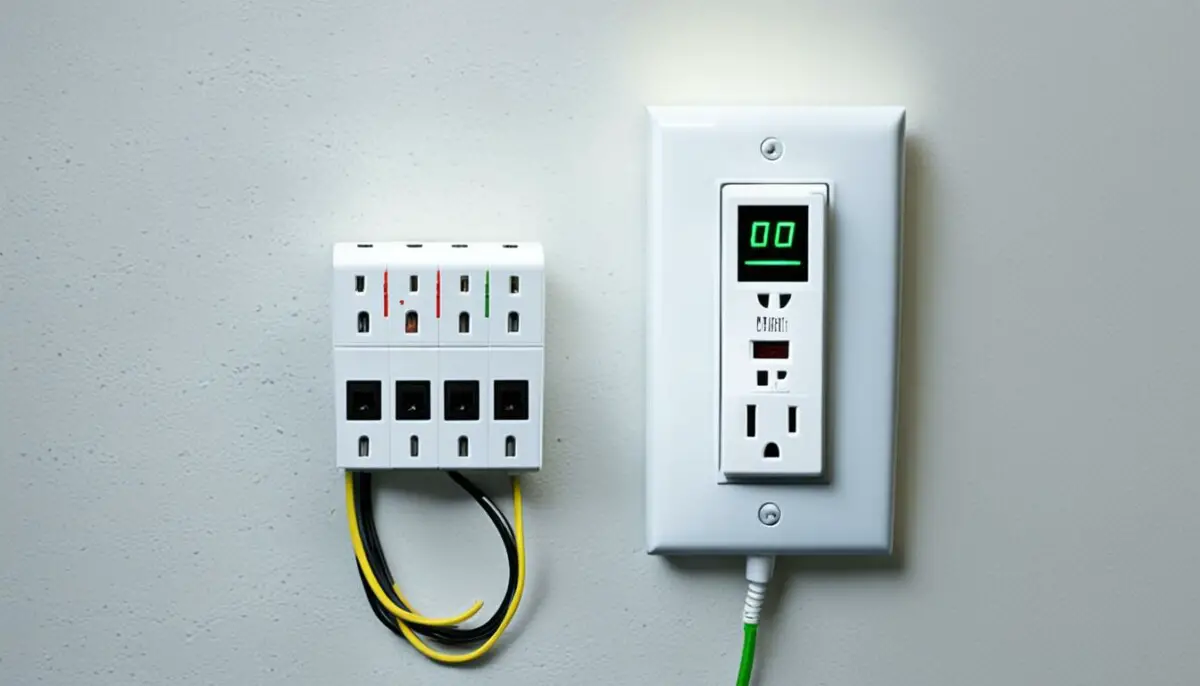
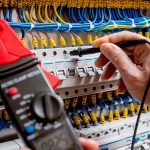
.jpg)
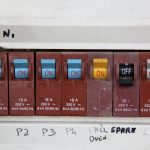
.jpg)


